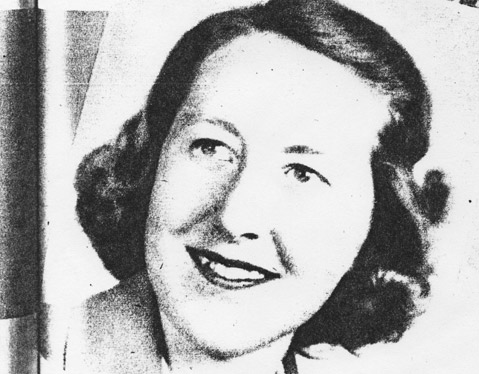Was He Really the Murderer?
CHP Officer Chief Suspect in Choir Girl Killing in 1942

CHOIR GIRL KILLED: When I was a young reporter covering the Santa Barbara courts, I heard sheriff’s deputies talk about “the Kirkes Case.”
It was an old one, and I was too busy covering new crimes to dig into it. A girl was murdered back in the 1940s, I gathered, and apparently there was a problem with the case — a big one.
I forgot about it until the other night, up at the Circle Bar B Guest Ranch Dinner Theatre, when I ran into Barry Liker, son of the late district attorney David Liker.

He brought up the Kirkes case, we chatted, and a few days later he dropped off three 1951 true-crime tabloids and Public Justice: A History of the Santa Barbara County District Attorney’s Office, 1850-1985.
The three tabloids, Daring Detective, True Detective, and Official Detective, with garish covers, priced at 25 cents, all told pretty much the same story.
It was a quiet evening in Carpinteria on Friday, August 28, 1942, when Margaret Senteney, 20, left home for the short walk to her regular job, spending the night with an aged woman who needed company. But an hour or so later, the woman contacted Margaret’s parents. “Where’s Margaret?”
Margaret hadn’t arrived, and a frenzied search produced no sign of her. She was a quiet girl who sang in the church choir and not one to run off to a party or with a boyfriend.
Undersheriff John (“Jack”) Ross, after sending out radio and Teletype bulletins, enlisted the help of CHP officer Leonard Kirkes, who lived in Carpinteria and knew the territory.
Kirkes joined the search and said he knew Margaret, who’d been a babysitter for his son. Kirkes, a married man, was the son of a local minister and had served in the Marines. The next day, while volunteers gathered for a search party, word came that Margaret’s body had been found in the hills, on a small road off Toro Canyon Road, property owned by famed conductor Leopold Stokowski.
When Ross said he was unsure how to get there, Kirkes spoke up. He knew exactly where it was. “I’ll lead the way, and you can follow.” They found Margaret’s body, clad in a red dress. She had been strangled. Nearby, Ross noticed a set of footprints, apparently those of a large man. He also noticed tire tracks with a “squeege” tread.
Leaving Kirkes to guard the site, Ross left to fetch the coroner and a technician, planning to make plaster casts of the footprints and tire tracks. Upon his return, he found Kirkes wandering around the site, obliterating the footprints. Ross was outraged but chalked it off to the highway patrolman’s inexperience. Kirkes was also seen walking over the tire tracks after being warned not to.
Investigators noticed marks on the girl’s leg and foot, apparently from a rubber floor mat, possibly meaning that she’d been in the trunk of an auto. Then they got a tip: A gray sedan, perhaps a 1939 model, had been seen near the remote site the day after Margaret disappeared.
Then Ross learned that Kirkes had been going around town, trying to establish an alibi for the time the girl went missing. And Kirkes owned a gray 1939 Ford coupe, a model with a similar mat. Then they learned that Kirkes was having his car painted green, including the trunk area, and said he threw away the mat.
Authorities were convinced that Kirkes killed the girl after she resisted his advances and threatened to tell his wife. But the case was circumstantial, and no charges were filed. In 1950, eight years after the murder and after Liker became DA, Kirkes was arrested. A Carpinteria woman had claimed that Kirkes, no longer a CHP officer, had engaged in a sexual conversation with her 8-year-old son. Then a friend of Margaret’s, 17 at the time of her murder, came forward. She’d said she’d seen the girl get into his car that night.
With the woman as a surprise witness at his trial, a jury found Kirkes guilty. He was sentenced to prison, but he appealed and a new trial was held in 1953. That jury learned that the earlier surprise witness had mental problems and had spent time at Camarillo State Hospital.
Her tainted testimony left only the circumstantial evidence, and it wasn’t enough. The jury took 14 minutes to acquit Kirkes. He died in Santa Barbara in 1988, age 82.



